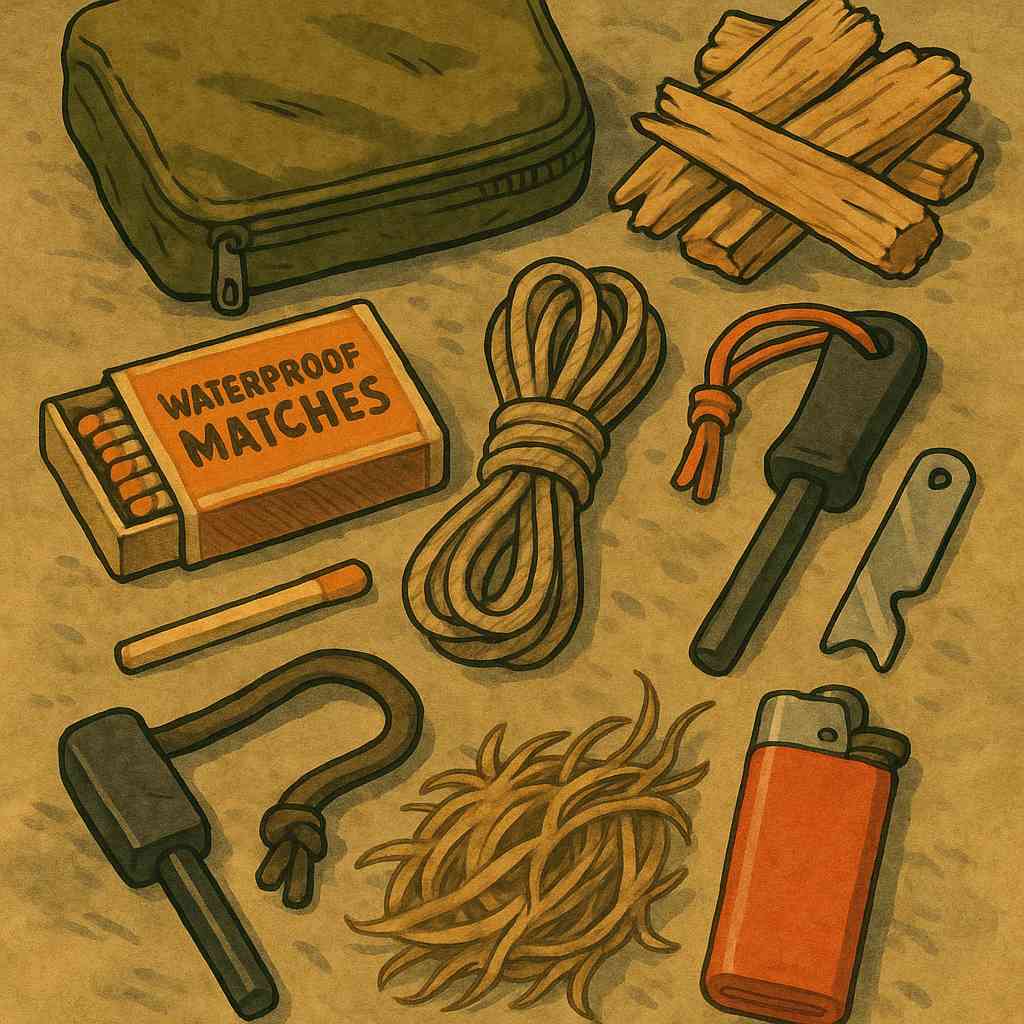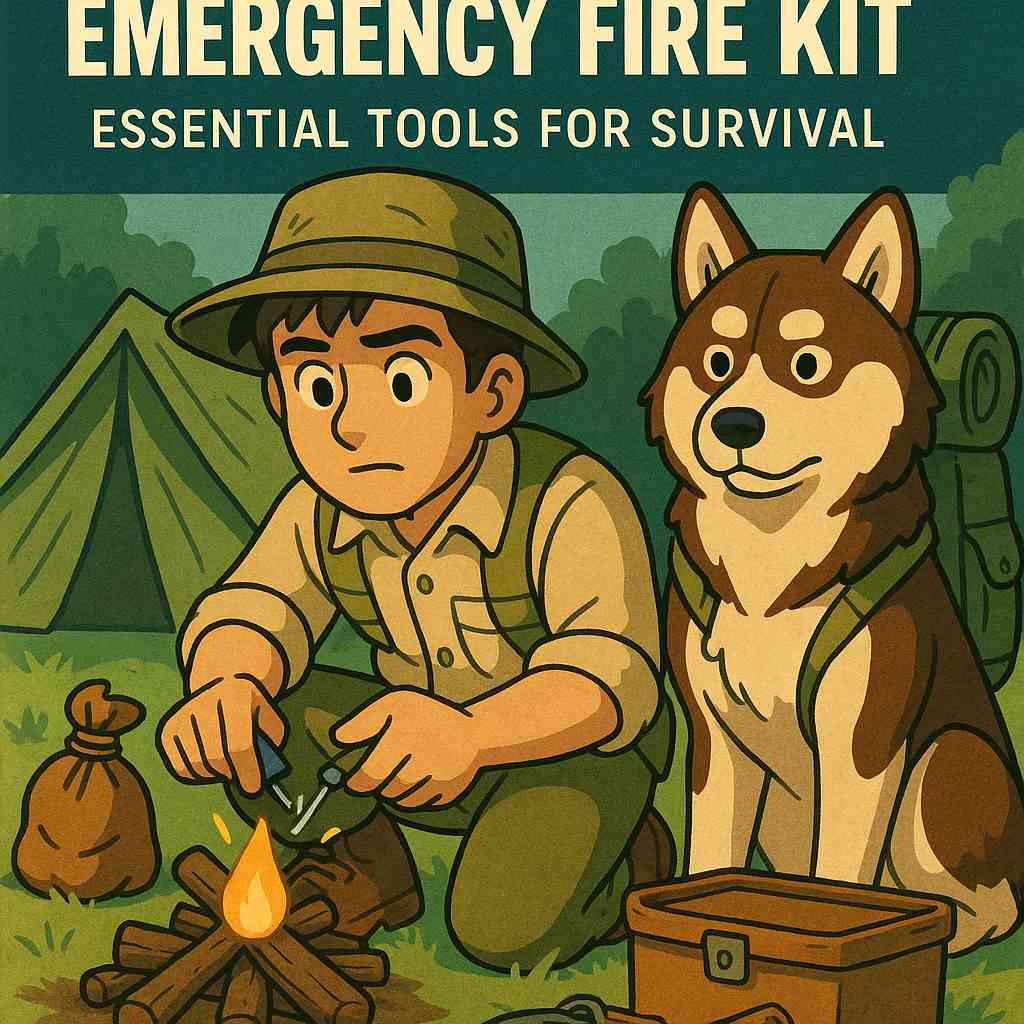Imagine being stranded without fire on a cold, wet night. Without heat, cooking, or signaling capabilities, your survival odds plummet. Fire isn’t just comfort—it’s life. An emergency fire kit ensures you can create warmth, prepare food, and stay safe when every degree counts. Let’s build a fire kit that won’t let you down when it matters most.
- ✅ Why a Fire Kit is Critical for Survival
- ✅ Essential Tools for Your Emergency Fire Kit
- ✅ How to Pack and Store Your Fire Kit
- ✅ Common Mistakes When Building a Fire Kit
✅ Why a Fire Kit is Critical for Survival
Fire is one of the four core elements of survival: shelter, water, fire, and food. A reliable fire kit can provide life-saving warmth, purify drinking water, cook food, and offer psychological comfort during emergencies. In survival situations, having multiple ways to start a fire dramatically increases your chances of success. A well-prepared fire kit means you’re never dependent on just one method or tool.
✅ Essential Tools for Your Emergency Fire Kit
Your fire kit should be lightweight, reliable, and include multiple fire-starting methods:
- Ferrocerium Rod (Ferro Rod): Generates sparks in all weather conditions, even when wet.
- Waterproof Matches: A quick and familiar method for fire starting.
- Windproof Lighter: Compact, refillable lighters with wind resistance are a must-have.
- Fire Starters: Cotton balls soaked in petroleum jelly, magnesium shavings, or commercial tinder tabs.
- Char Cloth: Easily ignites from a spark, excellent backup tinder.
Including redundancy ensures you can create fire even under the worst conditions.

✅ How to Pack and Store Your Fire Kit
Proper packing protects your fire kit from the elements:
- Use Waterproof Containers: Dry bags, sealed tins, or heavy-duty ziplock bags work well.
- Separate Components: Store tinder separately from ignition sources to avoid contamination.
- Double Up Critical Items: Carry two lighters, two fire starter types, and backup matches.
- Label Clearly: Make it easy to identify your fire kit even in low-light or stressful situations.
Position your fire kit somewhere easily accessible in your emergency gear or bug-out bag.
✅ Common Mistakes When Building a Fire Kit
Avoid these common errors that can compromise your ability to start a fire:
- Relying on Just One Method: Always include multiple ignition options.
- Ignoring Water Protection: Moisture can ruin your supplies fast—use waterproof storage.
- Forgetting Practice: Practice using every item in your kit before an actual emergency.
- Neglecting Fuel Sources: No fire starter will help if you have nothing dry to burn. Pack reliable tinder.
Testing and maintaining your kit ensures it performs when you truly need it.
A fire kit isn’t a luxury—it’s a survival essential. Building and maintaining a compact, reliable kit could mean the difference between life and death in emergencies. Take time to assemble yours carefully, double-check its contents regularly, and practice using every tool inside. When disaster hits, you’ll be ready to spark hope, heat, and survival with confidence.
✅ Frequently Asked Questions (FAQ)
- Q1. How often should I check my fire kit?
Inspect your kit every three to six months, ensuring lighters have fuel and matches are dry. - Q2. Can I use homemade fire starters?
Yes! Cotton balls with petroleum jelly, dryer lint, and waxed cardboard make excellent DIY tinder. - Q3. What’s the best fire starter for wet conditions?
A ferro rod combined with waterproof tinder like fatwood or fire tabs works best in wet environments. - Q4. How many fire starting tools should I carry?
At least three different methods: one lighter, one ferro rod, and one set of waterproof matches as backup.
Need help packing your bug-out bag? Check out our guide on bug-out bag essentials for more survival gear tips.
For more official survival recommendations, visit the Ready.gov Survival Kit Guide.

